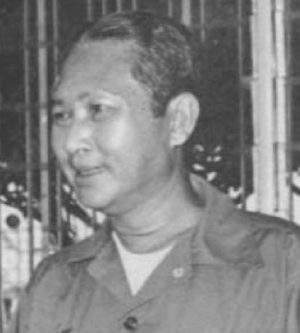This week marked the 50th anniversary of Cambodia’s 1970 coup, whereby King Norodom Sihanouk was removed from power, paving the way for Lon Nol to take control and remake Cambodia into a short-lived republic. The move is believed to have precipitated the power struggles that would eventually tear the country apart, leading to a civil war, the subsequent Khmer Rouge takeover, millions of deaths, and ten years of Vietnamese occupation.
Today, the coup has become a political prop, a way for Prime Minister Hun Sen to demonize any regime change as leading to mass chaos and civil war. It’s a strategy he has continue to employ over his decades of rule, with manifestations that can be seen even in Cambodia’s contemporary politics.
Cambodia’s opposition party was banned in 2017 for allegedly trying to topple the government with U.S. support – an outlandish claim made without a shred of evidence. Last year, Cambodia’s exiled opposition leader Sam Rainsy announced he would return to lead peaceful protests against Hun Sen’s authoritarian regime. Hun Sen quickly labeled the plan a coup attempt. The government arrested scores of Rainsy’s supporters, mobilized troops along the Thai border, and successfully appealed to Thailand’s government to deny him access to the country. When Rainsy failed to return, the government went on a months-long victory lap.
“The government and Interior Ministry have achieved great success in maintaining peace and stability,” said interior ministry spokesman, Khieu Sopheak, at a press conference this month, bragging that authorities arrested over 200 people.
While most would struggle to see how a peaceful protest against an authoritarian dictator qualifies as a coup, it’s not the first time that Hun Sen has stretched the limits of the word for his own political advantage. Even Lon Nol’s coup wasn’t actually much of a coup.
A coup is usually defined as a violent or illegal seizure of power. The removal of Sihanouk was neither. There was no fighting in the streets, no mass executions, not a single drop of blood was shed at the time. Members of the National Assembly voted unanimously to invoke an article of the constitution to remove Sihanouk from power. All of this took place against growing public unrest against Sihanouk, who was allowing the North Vietnamese to use Cambodia as a base of operations during the Vietnamese War.
Last year, Lon Nol’s son publicly defended his father, saying that he wasn’t a “traitor.” “It was not his decision, it was the decision of the National Assembly and the Cambodian people,” Lon Rith told the Khmer Times. He also blamed Sihanouk for supporting the Khmer Rouge, who had promised to reinstate him as king when they took power. Instead, he ended up under house arrest.
Rith’s comments provoked an angry rebuke from Hun Sen. While Lon Nol had a positive relationship with the United States, there’s no direct evidence that Washington was involved in the transfer of power. But Hun Sen has not let that shake his narrative. In March of last year, the premier blamed the “war and coup” on “incitement by foreigners.”
“Playing an anti-American card is pleasing for Hun Sen and his Chinese patrons,” said David Chandler, preeminent historian on modern Cambodia, in a recent email.
As Cambodia’s falls deeper and deeper into China’s orbit, details like China’s direct funding of the Khmer Rouge become forgotten, cast aside in favor of flimsy conspiracy theories against the United States.
The truth is Sihanouk was unpopular at the time, and this was reflected in the 1966 National Assembly elections, where Cambodians chose representatives that would eventually remove him from power. Chandler says the members of the National Assembly who were elected in 1966, were not “hand-picked by Sihanouk and included many people who disliked him.”
In Justin Corfield’s The History of Cambodia, he notes that Sihanouk publicly spoke out against four candidates running for reelection. “All four were easily reelected, with newspaper editor Soth Polin later commenting that the added publicity of Sihanouk’s attacks had actually made all four better known in their constituencies,” Corfield wrote.
Chandler himself was in Phnom Penh in June of that year, some three months after Sihanouk’s removal. He said everybody he spoke to was “delighted” with the result.
Contrary to Hun Sen’s claims, there was arguably only one coup carried out in Cambodia’s recent history – and it was perpetrated by him. In 1997, Hun Sen forcibly removed the royalist party Funcinpec from power, despite Funcinpec winning more votes in the 1993 election. Where Lon Nol’s “coup” was a vote in parliament, Hun Sen’s was tanks in the streets and mass executions. But Hun Sen’s coup also undermines one other important aspect of his narrative. The 1997 seizure of power did not lead to years of instability or civil war, rather it solidified his grip on the nation and ushered in a period of undisputed tyrannical rule that continues today.

































